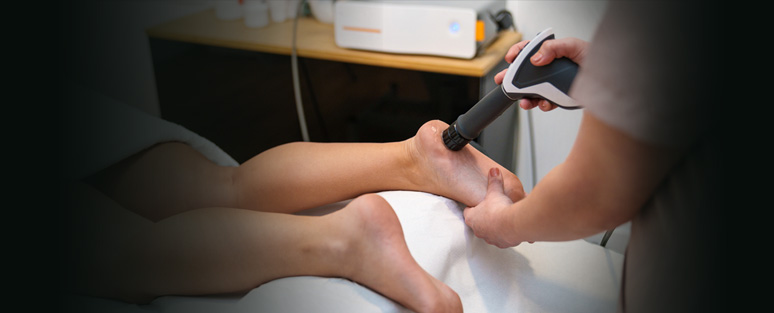
When it comes to your orthopedic health, choosing the right specialist is an important decision. Whether you are dealing with a sports injury, arthritis, or any other musculoskeletal condition, choosing an orthopedic specialist who offers comprehensive care is a must. In this blog post, we will guide you through the process of selecting a specialist who can provide the best possible care, tailored to your specific needs.
Look For These Qualifications and Expertise
Before you schedule an appointment with a specialist for your foot or ankle problem, it is important to ensure that they meet your desired qualifications. This step ensures that you receive high-quality care from an experienced, skilled, and knowledgeable physician.
One key factor to consider is experience. Look for an orthopedic surgeon with a minimum of twenty years of practice, indicating a highly skilled and seasoned professional. Additionally, board certification is a significant factor. The significance of board certification cannot be emphasized enough; board-certified orthopedic surgeons are dedicated to ensuring top-tier patient care by meeting stringent standards that include comprehensive medical training, successful completion of specialized board certification examinations, and a commitment to remaining up to date on the latest advancements in their field.
Furthermore, strong connections between orthopedic doctors, hospitals and highly rated Ambulatory Surgery Centers (ASCs) are increasingly important in healthcare today. When doctors can operate on patients in trusted facilities, it creates a seamless continuum of care, offering the patient accessibility, affordability, and quality that translates into a more reassuring and efficient healthcare experience.
Finally, quick access to diagnostic testing plays a crucial role in orthopedics. Surgeons equipped with on-site capabilities or established connections with local testing facilities can expedite these tests, allowing for faster and more accurate diagnoses.
What is Comprehensive Care?
Comprehensive care involves a thorough evaluation of your condition, consideration of your lifestyle and goals, and the development of a personalized treatment plan. Surgeons providing comprehensive care may also collaborate with other healthcare professionals, such as physical therapists, to ensure they provide the best possible care.
Comprehensive care is a critical aspect of choosing the right orthopedic surgeon for your foot and ankle issues. It signifies that your surgeon takes a holistic approach to your treatment, addressing not only the immediate problem but also considering your overall health and well-being.
The Power of Consultation and Communication
Effective communication between you and your orthopedic surgeon is essential throughout your treatment journey. During your initial consultation, you should feel comfortable discussing your concerns, asking questions, and receiving clear explanations of your diagnosis and treatment options.
In the world of orthopedic care, your voice matters. A surgeon who values effective communication ensures that you are an active participant in your care journey. They listen to your needs, explain procedures in a way you can understand, and involve you in the decision-making process.
Embracing the Effectiveness of Non-Surgical Treatments
Distinguished orthopedic surgeons, well-versed in patient care, recognize the immense value of presenting patients with a comprehensive array of options, including those that bypass surgical intervention. These treatments, while steering clear of the operating room, can bring relief, facilitate healing, and elevate the overall quality of life for individuals grappling with orthopedic challenges.
At Multnomah Orthopedic Clinic, non-surgical treatments are the cornerstone of their patient-centric approach to orthopedic care. Dr. Natalie Mesnier provides a variety of treatments, each tailored to meet the unique needs of every individual.
Once diagnosed, you will be prescribed the most appropriate treatment to address your condition. Every injury or problem presents on a spectrum, and treatment is based on when the injury occurred and its current stage of healing. This evaluation, combined with a shared outcome goal, allows for an individual treatment algorithm to be prescribed. Not all conditions require surgical treatment, and many acute injuries can be appropriately and successfully treated conservatively.
Chronic injuries can also be successfully treated conservatively. Treatment can initially start with the universally known Rest, Ice, Compression, and Elevation (RICE), combined with any of these approaches depending on the type of injury and the stage of healing:
- Strapping, padding, bracing, and orthotic support can protect support strained ligaments and tendons, or sprained joints.
- Simple shoe wear modification can protect areas of pressure such as at the great toe and the heel, for bunions or heel pain.
- Medications, such as non-steroidal anti-inflammatory drugs or cortisone injections, can help reduce pain and inflammation due to arthritis or trauma.
- PRP Injections (Platelet-Rich Plasma) involve injecting a concentrated form of a patient's blood plasma, rich in platelets and growth factors, to stimulate tissue healing and regeneration in joints and tendons.
- Extracorporeal Shock Wave Therapy (ESWT) is a non-invasive medical procedure that uses high-energy shockwaves to stimulate tissue healing and reduce pain in musculoskeletal injuries and certain chronic tendinopathies and conditions, such as Achilles tendinopathy, plantar fasciitis, rotator cuff tendonitis, and tennis elbow.
- Physical therapy (PT) focuses on reducing pain by strengthening feet and ankles through exercise, and by addressing mechanical dysfunction that may be limiting healing. PT also helps with arthritis and ankle instability, especially following an injury or an orthopedic surgical procedure.
In most cases, Dr. Natalie Mesnier’s treatment begins with non-surgical strategies, aimed at alleviating pain and enhancing mobility. These treatments revolve around symptom alleviation with the targeted resolution of underlying conditions, deformities, and instability—unveiling a pathway to health without the need for invasive procedures.
Surgical Treatments
Some conditions are too far gone, have failed aggressive non-operative intervention, or by their very nature cannot be treated conservatively. And if your level of function is significantly impaired, a thorough discussion of a surgical path, and the goal of surgical intervention is important. When surgery is your best option, our surgeons perform the most advanced surgical procedures for your condition, including.
- Arthroscopic surgery is a minimally invasive surgical procedure that uses a small camera and specialized instruments to diagnose and treat joint-related issues through tiny incisions, reducing trauma and recovery time.
- Fracture management includes the realignment and stabilization of broken bones, facilitating proper healing, relieving pain, preventing further injury, and minimizing the long-term sequelae of injuries.
- Treatment of Sports Injuries that limit function, including addressing ankle instability and weakness, or cartilage injuries such as Osteochondral lesions or fractures.
- Tendon repair or reconstruction is a surgical procedure designed to repair or modify tendons to restore function, improve joint mobility, and alleviate related issues.
- Deformity correction to restore mechanical axis and balance for conditions such as flat foot, high arch, or bunion deformities. Some procedures can be performed minimally invasively. In fact, Dr. Mesnier was instrumental in bringing some of these minimally invasive approaches to the Pacific Northwest and is still heavily involved in teaching minimally invasive procedures to other surgeons.
- Procedures geared toward diminishing the impingement and limited motion of some arthritic joints, with the goal of continued involvement in activities that require motion.
- Total ankle replacement is a surgical procedure in which a damaged or arthritic ankle joint is replaced with an artificial implant to restore mobility and relieve pain.
Patient Reviews and Testimonials
One of the most reliable ways to gauge the quality of an orthopedic surgeon's care is by reading patient reviews and testimonials. Real experiences from patients treated by the surgeon can provide valuable insights into their skills, bedside manner, and overall patient satisfaction.
Conclusion
Choosing the right orthopedic surgeon for comprehensive care is a crucial decision impacting your quality of life. Remember that your orthopedic health is a partnership between you and your surgeon. When you select a surgeon with the right qualifications, offers a range of treatment options, provides comprehensive care, explores regenerative therapies, garners positive patient reviews, communicates effectively, and is accessible to you, you're taking a significant step toward improved orthopedic health.
Whether you're facing a surgical procedure or exploring non-surgical alternatives, the right orthopedic specialist can guide you toward improved mobility and a higher quality of life. Don't hesitate to take the first step in prioritizing your orthopedic health—reach out to the team at Multnomah Orthopedic Clinic to schedule your evaluation with Dr. Natalie Mesnier today. Your journey to comprehensive foot and ankle care begins now.
Click Here to schedule a consultation with Dr. Natalie Mesnier at Multnomah Orthopedic Clinic. Your orthopedic health is her priority.














